Under the economic development plan, the government offered free-of-charge supplies of cement and other raw materials, as well as skilled human resources, to rural towns for them to build infrastructure. The nationwide economic plan transformed developing rural areas into one of the main driving forces behind the industrialization and modernization of the whole nation, including factories, cities and other workplaces.
The New Community Movement, or Saemaul Undong, focused on three principals: diligence, self-help and, lastly, a cooperative spirit. Based on these traits, people worked together to develop their communities, keeping in mind the two phrases “Let’s live well” and “We can do it.” As a result, the nation has been able to transform itself from one that received international aid to one that could provide aid to other countries in need.
Eyes from around the world are now focusing on Korea's successful experience of economic development, as well. Over the past ten years or so, more than 55,000 people from about 150 countries have flown to Korea to learn about the New Community Movement. More than 30 members of the U.N. have already launched similarly-inspired movements in their own rural areas. In particular, governments in Sri Lanka, Myanmar, Mozambique, Ethiopia, Uganda and Senegal are waging their own version of Saemaul Undong campaigns.
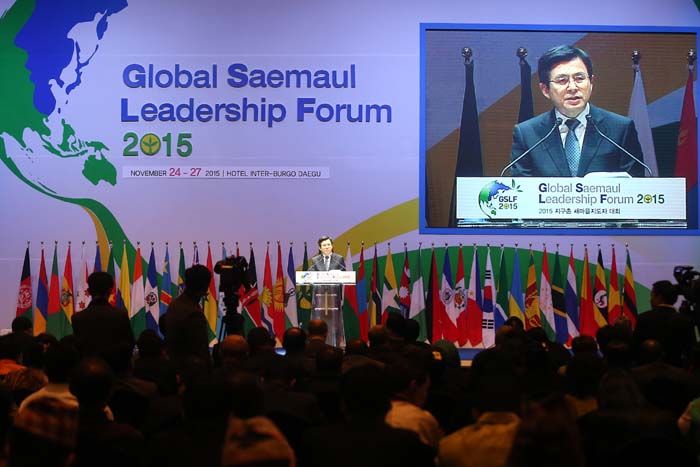
Prime Minister Hwang Kyo-ahn delivers the congratulatory address at the 2015 Global Saemaul Leadership Forum in Daegu on Nov. 24.
Reflecting the growing global interest in the movement, Daegu hosted the 2015 Global Saemaul Leadership Forum on Nov. 24. Under the theme of “Sustainable Development With Saemaul Undong,” the forum brought together approximately 6,500 representatives involved in rural development projects from 50 countries from around the world.
“Our community, which had to fight against poverty, barely having enough food in hand, has now grown remarkably, both spiritually and economically, thanks to this movement,” said a representative from Katereke in Uganda, as he explained how his community has changed since 2011 when it introduced the economic scheme.
A representative from Myanmar also outlined the series of changes that have been accomplished in his village where the New Community Movement was put in place. He said, “At first, people were focused solely upon privatizing common property to earn money as fast as they could. Three years into the project, however, people are now coming forth to make their village a rich one.”
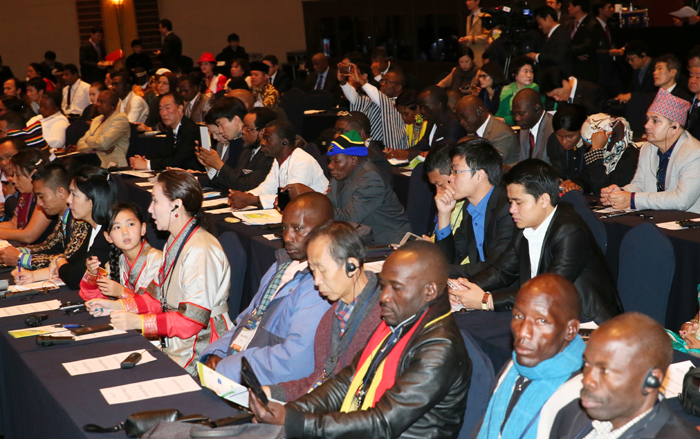
Participants listen to a speech about successful examples of Saemaul Undong projects carried out around the world during the 2015 Global Saemaul Leadership Forum in Daegu on Nov. 24.
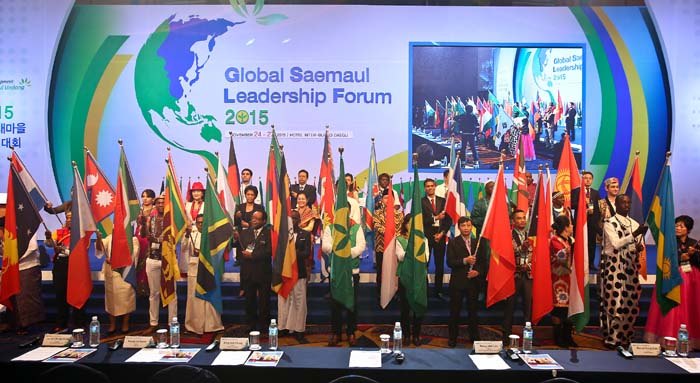
Participants wave their national flags during the opening ceremony of the 2015 Global Saemaul Leadership Forum on Nov. 24 in Daegu.
Henri-Bernard Solignac-Lecomte, head of the OECD's private sector development department, outlined four major factors behind the success of the New Community Movement: it takes a comprehensive and multi-regional approach; it attracts more participants from the community by means of incentives; it boosts community empowerment; and, lastly, it shares optimum examples related to rural development.
He said that, “The Saemaul Undong campaign has produced a series of successful results, as it met with the government-led leadership and the active involvement of the community, as well.”
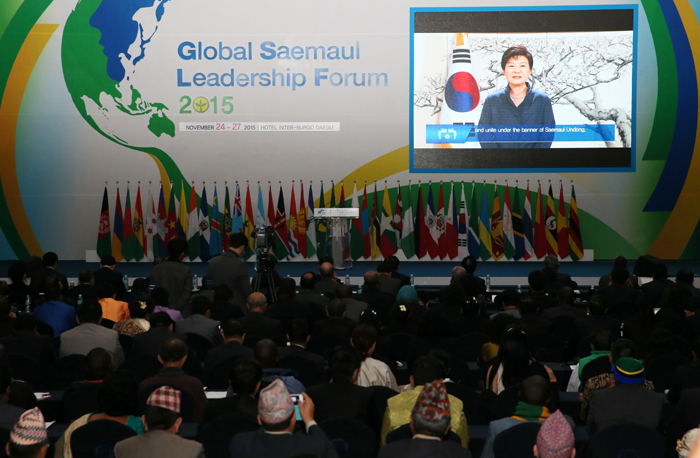
Participants watch a video message from President Park Geun-hye during the opening ceremony of the 2015 Global Saemaul Leadership Forum in Daegu on Nov. 24.
President Park Geun-hye sent a video message to the conference in which she stated that, “Our nation lifted itself out of poverty through the New Community Movement, armed with diligence, self-help and a cooperative spirit. The campaign has since grown into a sustainable development paradigm, one that is looked up to by the international community, including by the U.N. We will make continuous efforts to make the campaign a truly community movement, seeking a sense of sharing, service and thoughtfulness toward others, and an international model for regional development.”
Marking its second run this year, the Global Saemaul Leadership Forum concluded on Nov. 27 with the adoption of the Daegu Declaration. In it, participants agreed to work together to help the New Community Movement contribute to a world free from absolute poverty, as well as develop it into an international standard for sustainable development.
By Sohn JiAe
Korea.net Staff Writer
Photos: Organizing committee for the Global Saemaul Leadership Forum, Yonhap News
jiae5853@korea.kr
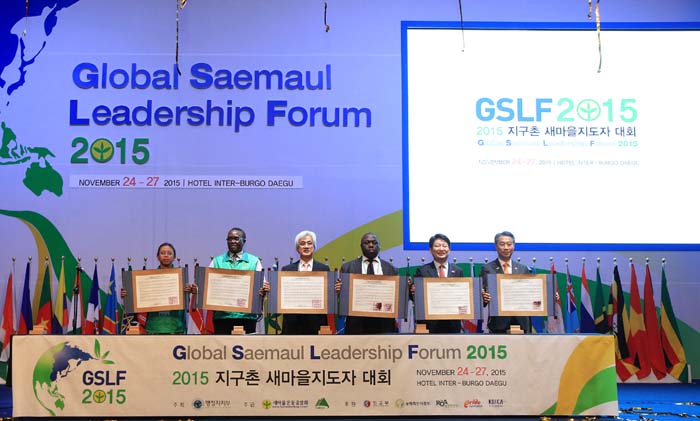
The 2015 Global Saemaul Leadership Forum comes to an end on Nov. 27 as participants adopt the Daegu Declaration.
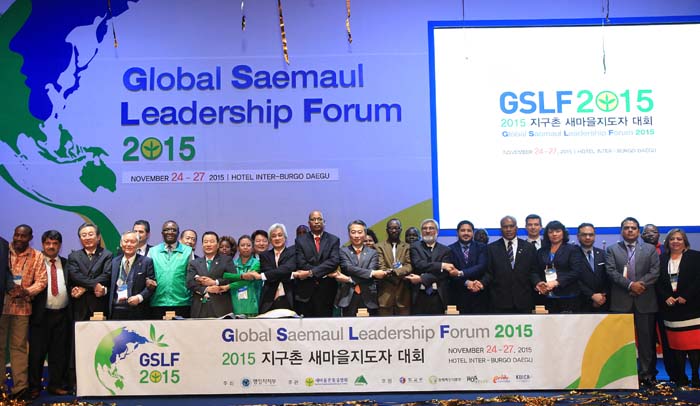
Participants in the 2015 Global Saemaul Leadership Forum pose hand-in-hand for a group photo in Daegu on Nov. 27.